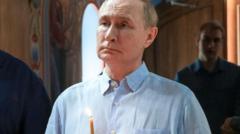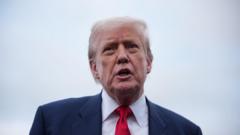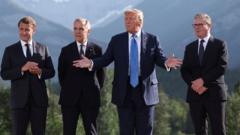President Trump's recent strategic maneuvers suggest a potential reconfiguration of global influence involving the United States, China, and Russia.
Trump’s Geopolitical Ambitions: Aligning with Russia and China

Trump’s Geopolitical Ambitions: Aligning with Russia and China
Exploring Trump's vision of world power dynamics amidst the backdrop of the Russia-Ukraine war and U.S.-China relations.
In a shifting geopolitical landscape, President Trump has signaled a desire for a new world order, one dominated by three major players: the United States, China, and Russia. His recent comments indicate an inclination towards normalizing economic relations with Russia, seemingly easing pressure on Moscow regarding its ongoing conflict in Ukraine. At the same time, Trump is working to mitigate the impact of his global trade conflicts by encouraging dialogue with China's leadership.
In a recent interview, Trump remarked, “We all want to make deals,” likening the U.S. to a “giant store” where international powers are eager to negotiate. Some foreign policy analysts interpret this approach as Trump's ambition for a tripartite sphere of influence that harks back to imperial configurations of the 19th century.
This strategy is evident in Trump’s controversial proposals to take control of Greenland from Denmark, annex Canada, and reassert American authority over the Panama Canal—all indicative of his aim to expand U.S. dominance within the Western Hemisphere. Such ambitions could reshape the balance of power as Trump pursues a vision where the U.S., China, and Russia each hold sway over their respective territories, challenging the traditional notions of global governance and cooperation.
Trump's bold assertions and push for deals may not only redefine U.S. foreign relations but also signal a drift towards a multipolar world, a drastic change from the post-Cold War ideological landscape.




















